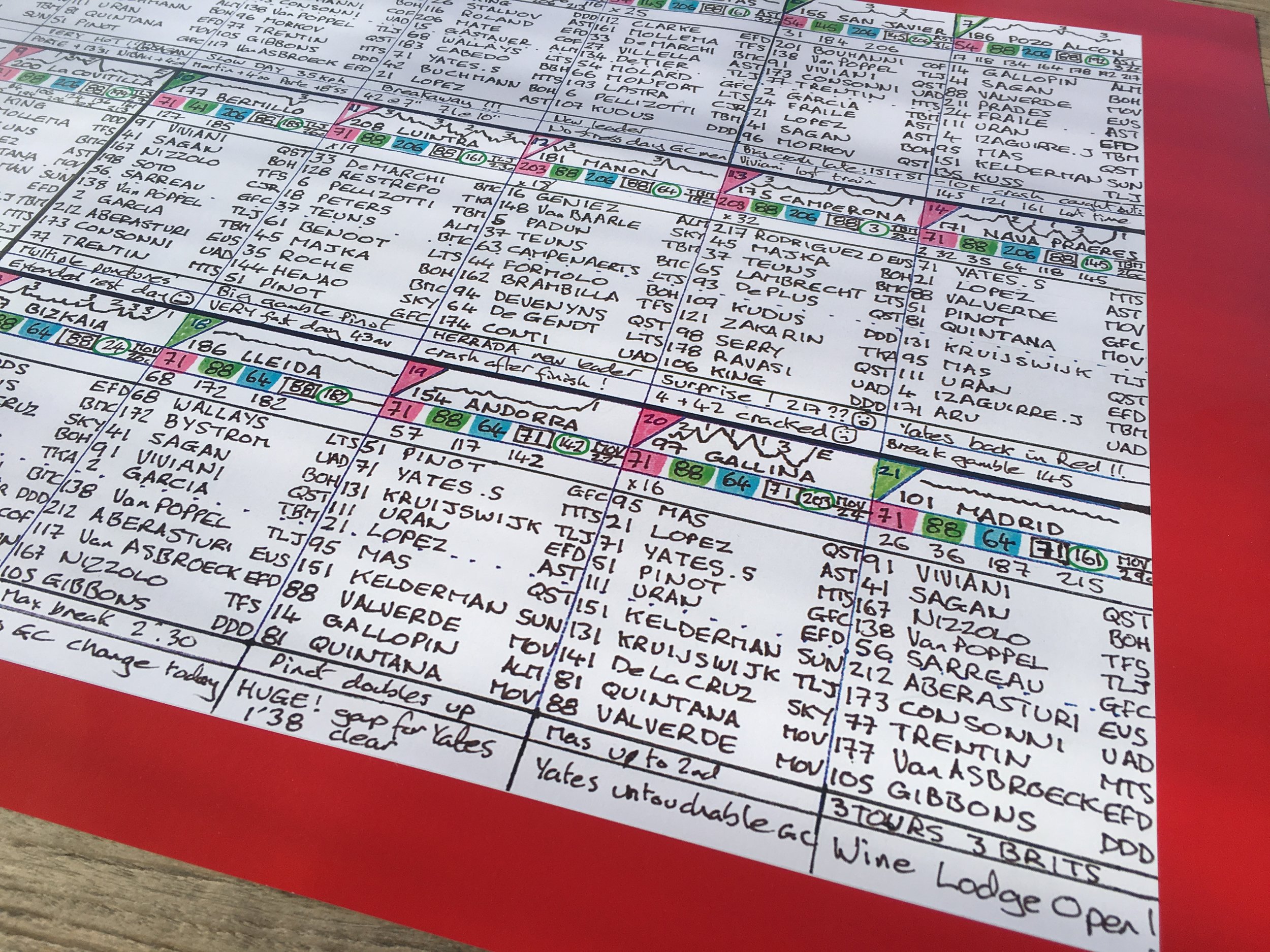As Mark Beaumont comes to the end of his extraordinary round the world cycle, one day ahead of schedule today, I’m caught in two minds. On the one hand you can only feel admiration for such an epic feat of endurance cycling. He’s covered 18,000 miles, riding 16 hours a day since the beginning of July. He met his target of covering 240 miles a day and has endured physical and mental exhaustion to get there.
On the other hand one’s left with a feeling of, well…what’s the point?
The challenge that Beaumont set himself, which had the rather romantic title of “Around the World in 80 days,” had little in common with the classic Jules Verne novel published in 1873. Setting out from Paris one dark early morning to cross the planet on a bike, he had already garnered the sponsorship of an investment bank who financed him and his team of doctors, mechanics, navigators and logistics people to make it possible.
The point, of course, was to break a world record.
It’s been a phenomenal story of endurance, mind over matter, organisation, and overcoming massive obstacles by breaking them down into smaller ones. What he and his team have accomplished has been a great logistical and physical achievement.
And yet, and yet...
What’s the point of travelling around the entire planet if, at the end of it, you’ve had next to no contact with any of its inhabitants other than your dedicated support crew who have been following you the whole way in a camper van?
What’s the point, when you’ve just ridden along some of the most uninspiring roads the world has to offer in your quest to get 240 miles completed each day?
What’s the point, when you’ve apparently hated every minute of the experience?
I’ve occasionally dipped into Mark’s video postings over the last couple of months and have felt a mixture of huge sympathy for all the suffering he’s been going through tempered with a sense of sadness that, what should have been an enlightening, enriching, possibly even spiritual experience, has been dumbed down to an exercise of turning the pedals round and round and notching up the required mileage.
While he and his team have never made any claims that this expedition is anything other than a mammoth display of human endurance, one is left asking the question of what is its significance?
He and his team have successfully cancelled out every possible obstacle that presents the true adventurer. His route is planned for him, his mechanic services his bike at the end of each day, he’s fed and watered, doctored and taken of care of by his support crew. All he has had to do is pedal away in a mindless state.
Where’s the adventure? His route entirely by passed the Indian subcontinent, South America and Africa, meaning that he used well maintained highways for the bulk of his journey. Mark had a crash in Russia when he got a nasty bash on his elbow and face requiring a filling in his tooth be replaced. The camper had a minor accident and he’s been ill quite a bit. But in truth, that’s about it.
The video clips that document the past 79 days reveal the banality of the entire expedition – his minder takes us for us a walk around the supermarket to tell us that’s she’s buying “some cereal, fruit and veggies, some granola and some lunchtime foods…” Fascinating. Mark delivers a review of the day and there’s nothing really to say apart from it was bloody hard and he’s tired and hurting. Really – you don’t say!
Supported endurance bike events are a curious thing. While the cyclist attempts to complete the route under his or her own steam, it seems ironic that for the duration they’re followed by a camper van pootling along at 15mph. I almost feel as much sympathy for the driver who had to overcome hours every day of staring through a windscreen at Beaumont’s lycra clad bum for months on end.
It’s a boring and monotonous way to spend your time and no surprise in the videos that the team appear completely spaced out, uninspired by the whole expedition. They’re clearly just bored out of their brains.
And then there’s poor old Mark who is equally brain dead at the end of each day, his only thoughts of filling his body with fuel and getting some sleep before he repeats the same process all over again the following day.
Watching Mark climb onto his bike to cover another stretch of dull, often flat and uninteresting tarmac, that would offer little in the way of danger or even surprises, reminded me of the man who sat on an exercise bike at home with a virtual reality mask on his head to complete Lands End to John O’Groats.
As someone who loves to cycle it’s rather depressing that there seems to be next to no enjoyment from the whole experience. Of course, cycling and suffering go hand in hand. Who hasn’t struggled on a long ride or bike tour with exhaustion, pain, saddle sores, even boredom. Overcoming these obstacles is part of the sense of achievement we get by doing so. But surely there’s more to it than that.
Any bike ride, whether it’s a daily commute, a bike touring expedition or completing the Etape may include all of the above but there’s that indefinable pleasure of man and machine working in unison, the hum of rubber on tarmac, the glorious views, the unexpected around a corner, the heat, the cold, the wet, the wind. There’s a spiritual element to cycling that makes us feel more alive than anything else in the world. It’s joy. It’s this that satisfies us and leaves us endorphin fuelled and exhilarated at the end of a day in the saddle.
Ultimately the question remains unanswered of why Beaumont undertook this expedition other than to break a world record. Many explorers and adventurers have been asked that. George Mallory famously replied to the question of why he wanted to climb Everest with, “Because it’s there.” For some reason this flippant and rather banal answer which was delivered, I believe, off the cuff, to a New York Times reporter has been given greater significance than it deserves.
That comment, which made a catchy headline, was in fact followed by a rather more detailed answer. “Everest is the highest mountain in the world, and no man has reached its summit. Its existence is a challenge. The answer is instinctive, a part, I suppose, of man’s desire to conquer the universe.”
George Mallory: "What we get from this adventure is just sheer joy."
But Mallory was driven by more than, “because it’s there.” His was a romantic struggle with the self and it’s unfortunate that he has become defined by that quote. He was also motivated by, “the indomitable desire to see what lies beyond the heart of man,” and he revealed more profound thoughts to his wife than he did to that NY Times hack: “One comes to bless the absolute bareness, feeling that here is a beauty of form, a kind of ultimate harmony.”
And, perhaps more significantly he wrote, “If you cannot understand that there is something in man which responds to the challenge of the mountain and goes out to meet it, that the struggle is of life itself upward and forever upward, then you won’t see why we go. What we get from this adventure is just sheer joy. And joy is, after all, the end of life.”
While Mark Beaumont has climbed his own Everest, he has done so without joy. It’s that quest for joy that Mallory strove for and that yearning that he struggled to articulate, but nonetheless was able to romanticise, that are truly inspiring.

































